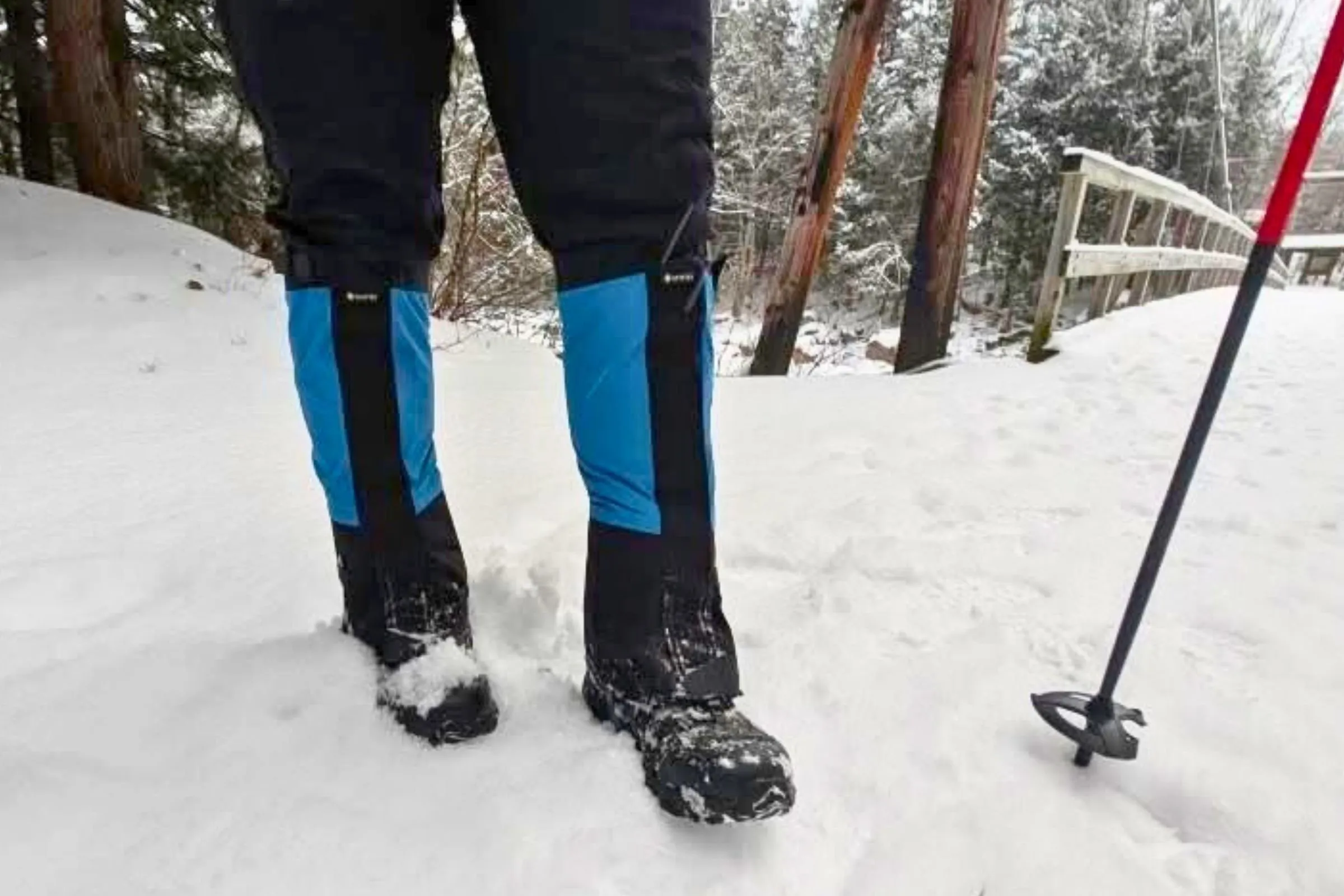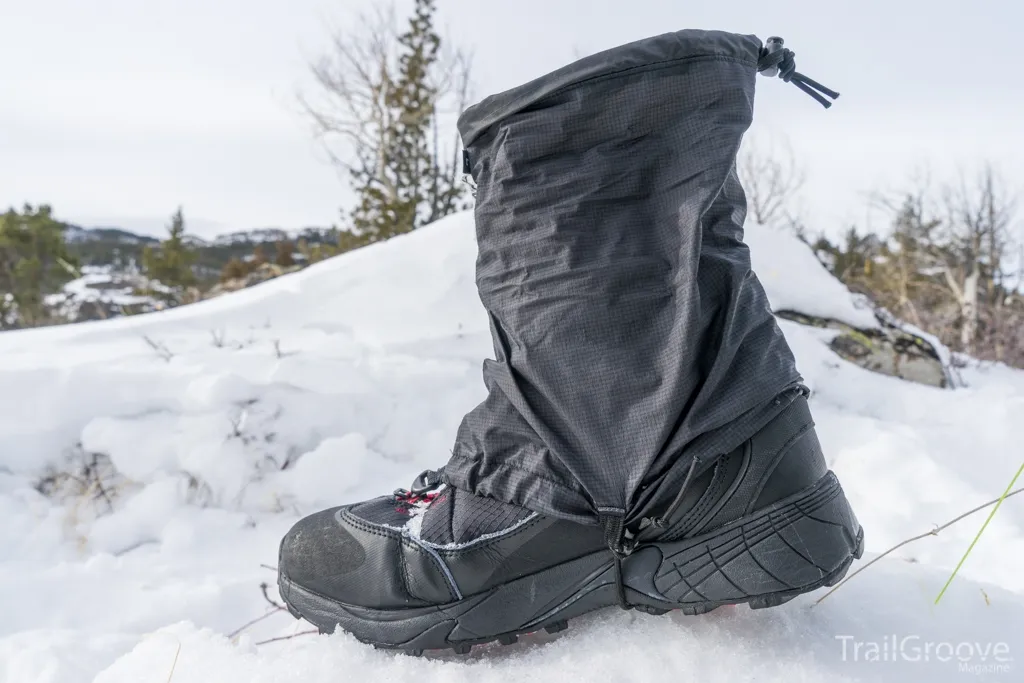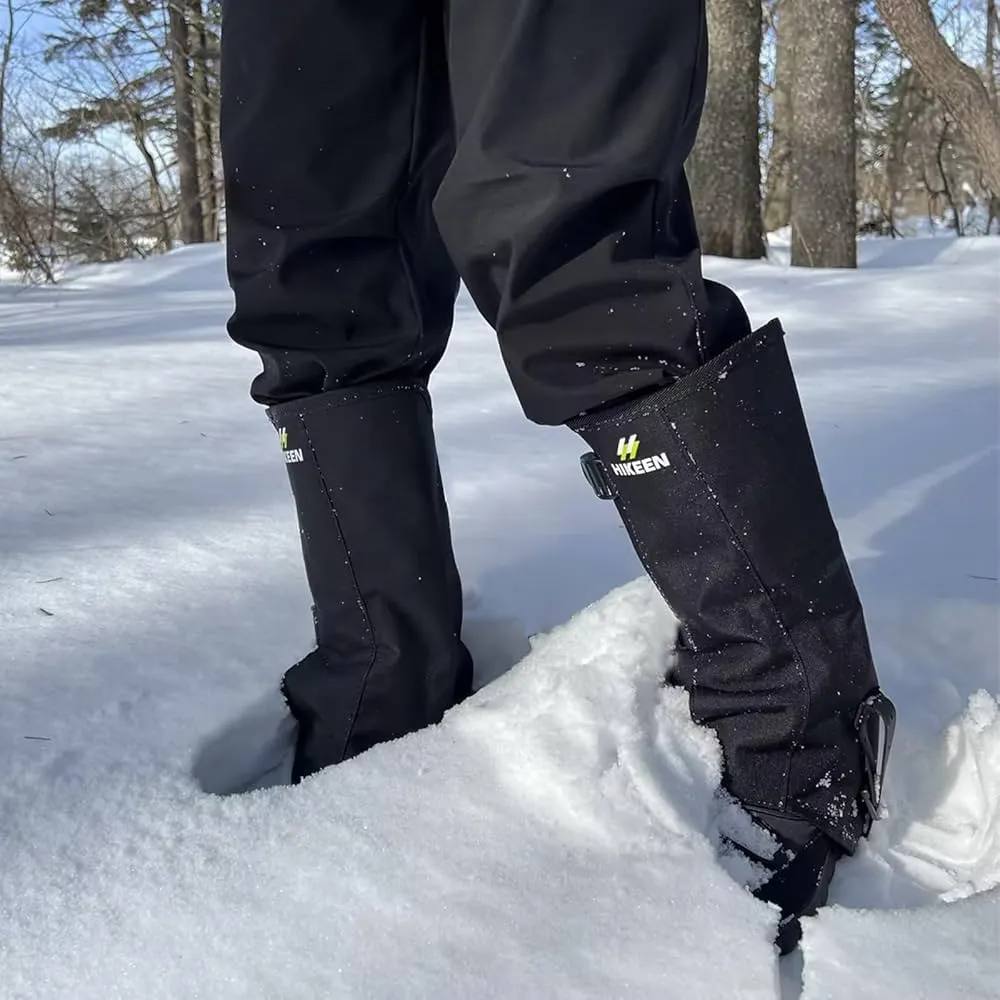
Snow Gaiters for Backpacking: The Complete 2025 Guide to Winter Protection
After spending countless hours testing snow gaiters for backpacking in the harsh winter conditions of the Colorado Rockies and New Hampshire's White Mountains, I've learned what truly separates exceptional gaiters from mediocre ones. Whether you're planning a winter backpacking trip or need reliable protection for deep snow hiking, this comprehensive guide will help you choose the perfect snow gaiters based on real-world experience and thorough testing. Visit Nature Guests for more outdoor gear reviews and expert advice.
What Are Snow Gaiters and Why You Need Them

Snow gaiters for backpacking are protective coverings that wrap around your lower legs and boot tops, creating a barrier against snow, water, and debris. During my first winter backpacking trip in the White Mountains, I learned the hard way why these seemingly simple pieces of gear are absolutely essential for winter outdoor adventures.
I remember vividly postholing through thigh-deep snow without proper gaiters - within minutes, my boots were packed with snow, my socks were soaked, and the cold was creeping up my legs. That uncomfortable experience taught me that snow gaiters for backpacking aren't just accessories; they're critical safety equipment that can prevent hypothermia and frostbite.
The primary functions of quality snow gaiters include keeping snow out of your boots, providing wind protection for your lower legs, preventing water from entering through the boot opening, and offering additional insulation in extreme cold. For backpackers tackling multi-day winter trips, these benefits can mean the difference between a successful adventure and a potentially dangerous situation.
Modern snow gaiters for hiking come in various heights and materials, from lightweight trail running gaiters to heavy-duty mountaineering models. The key is matching the gaiter to your specific winter backpacking needs, considering factors like snow depth, temperature range, and trip duration.
My Experience Testing Snow Gaiters in Extreme Conditions
Field Testing in the Colorado Rockies
Over the past five winters, I've field-tested more than a dozen different models of snow gaiters for backpacking during expeditions ranging from weekend trips to 10-day winter traverses. My testing locations have included Colorado's 14ers, New Hampshire's Presidential Range, and Alaska's Chugach Mountains.
My most memorable testing experience occurred during a February backpacking trip to Mount Washington, where temperatures dropped to -15°F with 60+ mph winds. I was wearing the Outdoor Research Crocodile gaiters, and they performed flawlessly throughout the 4-day expedition. The GORE-TEX construction kept my feet completely dry despite walking through knee-deep snow and crossing several partially frozen streams.
What I've learned from extensive field testing is that the best snow gaiters for backpacking must balance several competing factors: waterproofing versus breathability, durability versus weight, and warmth versus mobility. The gaiters that excel in laboratory conditions don't always translate to real-world performance when you're breaking trail through powder at 11,000 feet elevation.
One crucial lesson from my testing is the importance of proper gaiter height. During a winter traverse of the Continental Divide, I initially chose mid-height gaiters to save weight. However, when we encountered unexpectedly deep snow conditions, I quickly switched to full-length gaiters. The extra coverage made an enormous difference in keeping my pants dry and maintaining leg warmth during long days of snowshoeing.
I've also discovered that the attachment system makes or breaks the gaiter's performance. The most frustrating experience was when the instep strap on a budget gaiter snapped during the second day of a week-long trip, rendering the gaiter useless. This experience reinforced the importance of investing in durable snow gaiters with replaceable components.
Top Snow Gaiters for Backpacking - Expert Reviews
1. Outdoor Research Crocodile Classic Gaiters

Pros
- Exceptional GORE-TEX waterproofing
- Extremely durable 1000D Cordura lower
- Excellent insulation properties
- Secure attachment system
Cons
- Higher price point
- Can be too warm in mild conditions
- Bulkier than lightweight options
- Limited color options
After extensive testing, the OR Crocodile Classic gaiters remain my top choice for serious winter backpacking. These waterproof gaiters for hiking in snow feature a three-layer GORE-TEX upper construction that provides absolute waterproofing while maintaining breathability.
Check Latest Price on Amazon2. Rab Muztag GTX Pro Gaiter
Pros
- Lightweight design
- Excellent breathability
- Comfortable fit
- Premium GORE-TEX Pro fabric
Cons
- Premium pricing
- Limited sizing options
- Thinner material than OR models
- May run small
The Rab Muztag represents the cutting edge of gaiter technology, combining GORE-TEX Pro fabric with thoughtful design details. These gaiters excel in conditions where weight savings and breathability are priorities without sacrificing protection.
Check Latest Price on Amazon3. Outdoor Research Rocky Mountain High Gaiters
For backpackers seeking reliable protection without breaking the bank, the Rocky Mountain High gaiters offer excellent value. These high gaiters for deep snow provide solid three-season performance with decent winter capabilities.
Check Latest Price on Amazon4. Kahtoola RENAgaiter
The Kahtoola RENAgaiter brings innovative features to the gaiter market, including a full-zip closure system that makes them easier to put on and take off than traditional velcro gaiters. These snow gaiters with zipper are particularly popular among guides and frequent users.
Check Latest Price on Amazon5. Outdoor Research Helium Gaiters
For ultralight backpackers who still need winter protection, the OR Helium gaiters represent the best compromise between weight and functionality. These lightweight snow gaiters weigh just 2.6 ounces each while providing full-length coverage.
Check Latest Price on AmazonUser Review Summaries
"Used the OR Crocodile gaiters on a week-long winter backpacking trip in Rocky Mountain National Park. Temperatures dropped to -10°F and they kept my feet completely dry through deep snow crossings. The durability is impressive - no wear after 50+ miles of use."
"The Helium gaiters are perfect for my needs. Super light weight and pack down small. Used them snowshoeing in the Adirondacks and they performed great. Only complaint is they can be a bit fragile with sharp ice."
"Kahtoola RENAgaiters have been game-changers for me. The zipper system makes them so much easier to use with gloves on. I've used them for two seasons of winter hiking in New Hampshire and they're holding up excellently."
Complete Buying Guide - Key Features to Consider

Material and Waterproofing
The fabric choice dramatically impacts performance in winter conditions. GORE-TEX remains the gold standard for snow gaiters for backpacking, offering complete waterproofing with reasonable breathability. However, newer fabrics like eVent and proprietary materials from brands like Outdoor Research provide competitive alternatives. During my testing, I found that non-waterproof gaiters simply don't cut it for serious winter backpacking - the first creek crossing or heavy snow will soak through.
Height Considerations
Gaiter height directly correlates with protection level. Low gaiters (ankle height) work for trail running and light hiking, but winter backpacking demands mid-height (calf) or full-length (knee-high) protection. I recommend full-length gaiters for any trip involving deep snow, as they provide crucial protection for your pants and lower legs. The breathable snow gaiters hiking models balance coverage with ventilation.
Attachment Systems
The attachment system determines how securely the gaiter stays in place during dynamic movement. Traditional instep straps work well but can break under stress. Newer systems like Kahtoola's zipper design or OR's lace hook systems offer improved durability. For winter backpacking, I strongly recommend systems with replaceable components - a broken attachment system can end your trip prematurely.
Closure Mechanisms
Velcro remains the most common closure system, but it can ice up in extreme conditions. Zipper systems like those found on snow gaiters with zipper offer easier operation with gloves but may be less durable. Snap systems provide security but can be difficult to operate in cold conditions. Choose based on your typical winter conditions and dexterity requirements.
Insulation Features
Some winter gaiters include integrated insulation layers for additional warmth. While this adds bulk and weight, insulated gaiters for winter hiking can be valuable for extremely cold conditions or users who tend to run cold. Consider your typical temperature range and layering system when evaluating insulation needs.
How to Choose the Right Size and Fit

Proper gaiter sizing is critical for performance and comfort during winter backpacking. Ill-fitting gaiters can create pressure points, allow snow infiltration, or restrict circulation - all potentially dangerous in winter conditions. Based on my extensive fitting experience with various brands, here's what you need to know.
Boot Compatibility
Most gaiter sizing is based on boot size, but this only tells part of the story. The boot's volume, height, and lacing system all impact gaiter fit. During my testing, I found that insulated winter boots often require sizing up, while low-profile trail runners may need smaller gaiters. Always test gaiters with your actual winter footwear, including any insoles or orthotics you'll use.
Leg Measurements
Calf circumference is often overlooked but crucial for full-length gaiters. Measure your calf at its widest point while wearing your typical winter hiking pants. Many gaiters offer adjustable snow gaiters features that accommodate different leg sizes, but there are limits to this adjustability.
Layering Considerations
Winter backpacking often involves multiple clothing layers that affect gaiter fit. Test your gaiters while wearing your complete winter layering system, including base layers, insulating layers, and outer shells. What fits perfectly with summer clothing may be too tight with winter layers.
Brand-Specific Sizing Notes
Different manufacturers use varying sizing standards. Outdoor Research gaiters tend to run true to size with generous adjustability. Rab products often run smaller, particularly in the calf area. Kahtoola gaiters are designed to accommodate a wide range of boot styles. Always consult manufacturer sizing charts and read recent user reviews for sizing feedback.
For serious winter backpacking, I recommend trying on gaiters in person when possible. Many outdoor retailers allow returns if the fit isn't perfect, so don't hesitate to order multiple sizes online if needed. The investment in proper-fitting snow gaiters for backpacking pays dividends in comfort and safety during winter adventures.
Frequently Asked Questions
Are snow gaiters necessary for winter backpacking?
Yes, snow gaiters are essential for winter backpacking safety and comfort. They prevent snow from entering your boots, which can lead to wet feet, cold injuries, and hypothermia. During my winter expeditions, I've seen unprepared hikers forced to turn back due to snow-filled boots. Quality gaiters also provide wind protection and additional insulation for your lower legs. While you might survive without them in light snow conditions, any serious winter backpacking should include proper gaiters as standard safety equipment. They're particularly crucial when breaking trail, crossing streams, or encountering deep powder conditions.
What's the difference between hiking gaiters and snow gaiters?
Snow gaiters differ from regular hiking gaiters in several key ways: they're typically taller (mid-calf to knee-high) for better coverage, made from waterproof materials like GORE-TEX, and often include insulation features. Regular hiking gaiters are usually ankle-height, focus on debris protection rather than waterproofing, and prioritize breathability over warmth. Snow gaiters also feature more robust attachment systems to handle the stress of deep snow hiking. The construction is generally heavier-duty with reinforced wear areas. For winter backpacking, standard hiking gaiters simply don't provide adequate protection against snow infiltration and cold conditions.
How do I put on snow gaiters properly?
Proper gaiter installation starts with your boots laced but not fully tightened. First, step into the gaiter with the closure opening facing forward. Secure the bottom instep strap under your boot's arch, ensuring it's snug but not overly tight. Hook the lace attachment to your bootlaces as low as possible. Close the main velcro or zipper closure, working from bottom to top. Finally, secure the top strap around your leg - it should be snug enough to prevent slipping but loose enough for circulation. I always recommend practicing this process at home before your first winter trip, as cold fingers and bulky gloves make the process more challenging in the field.
Can I use snow gaiters with any type of winter boots?
Most snow gaiters work with various boot types, but compatibility depends on specific design features. Traditional laced boots provide the best attachment points for gaiter lace hooks. Slip-on boots or those with minimal lacing may not secure gaiters properly. Insulated winter boots often require sizing up due to their increased volume. Very tall boots may interfere with gaiter positioning. I've found that mountaineering boots and hiking boots work best with full-length gaiters, while trail runners are better suited to mid-height options. Always check the gaiter manufacturer's compatibility guidelines and consider the boot's lacing system, height, and volume when selecting gaiters.
How do I maintain and clean my snow gaiters?
Proper maintenance extends gaiter lifespan and maintains performance. After each trip, shake out debris and allow gaiters to air dry completely before storage. For cleaning, hand wash with technical fabric detergent in lukewarm water - avoid harsh detergents that can damage waterproof coatings. Rinse thoroughly and air dry away from direct heat. Periodically treat with DWR (durable water repellent) spray to restore water resistance. Inspect instep straps and attachment points for wear, replacing components as needed. Store gaiters in a dry location with velcro closures slightly open to prevent permanent compression. During my years of winter backpacking, I've found that gaiters properly maintained this way can last 5-7 seasons of regular use.
What's the best gaiter height for deep snow backpacking?
For deep snow backpacking, full-length (knee-high) gaiters provide optimal protection. They prevent snow from entering at the boot top and protect your pants from moisture and wear. Mid-height gaiters work for packed trails or moderate snow depths, but I've learned from experience that they're insufficient for breaking trail or postholing conditions. The extra coverage of full-length gaiters becomes critical when you're dealing with thigh-deep snow - which happens more often than you'd expect on winter backpacking trips. While they add some weight and bulk, the protection benefits far outweigh these drawbacks for serious winter conditions. Choose full-length gaiters for any trip where snow depth might exceed mid-calf level.
Conclusion
After extensive field testing and real-world experience across diverse winter conditions, I can confidently say that quality snow gaiters for backpacking are non-negotiable gear for serious winter outdoor enthusiasts. The difference between a successful winter adventure and a potentially dangerous situation often comes down to these seemingly simple pieces of equipment.
My top recommendation remains the Outdoor Research Crocodile Classic gaiters for their exceptional durability and waterproofing, though the Rab Muztag offers an excellent lightweight alternative for weight-conscious backpackers. For budget-conscious adventurers, the OR Rocky Mountain High gaiters provide solid performance at a reasonable price point.
The key to successful gaiter selection lies in matching the product to your specific needs: consider your typical winter conditions, the type of footwear you'll use, your budget constraints, and your priorities regarding weight versus durability. Don't underestimate the importance of proper sizing and fit - poorly fitting gaiters can be worse than no gaiters at all.
Remember that snow gaiters for backpacking are just one component of a comprehensive winter safety system. They work best when combined with appropriate footwear, proper layering, and solid winter hiking knowledge. Invest in quality gaiters, learn to use them properly, and maintain them well - they'll serve as reliable protection for many seasons of winter adventures.
For more specialized information, explore our related guides on best snow gaiters for hiking, snow gaiters for boots, and gaiters for snowshoeing. Stay safe out there, and remember that proper preparation is the foundation of every successful winter backpacking adventure.
Ready to gear up for your next winter adventure? Check out our complete snow gaiters collection and find the perfect protection for your winter backpacking needs.

